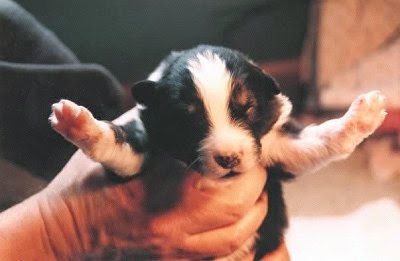Tell us a bit about your latest book.
Crazy Bitch: Living with Canine Compulsive
Disorder is the true story of my dog Venus’s struggle with mental illness and
how her canine companion Zeus and our family coped. In other words, it’s a love
story.
Which is harder and which is more fun,
fiction or nonfiction?
“Crazy Bitch”
is my first nonfiction book and my first dogoir. Learning how to write in a new
genre is challenging. It’s not enough to write about the facts as they happened.
The writer’s job is to make those facts into a story and make it interesting. At
the same time I am writing about something very personal – my own life. This
experience has given me the opportunity to expand as a writer in ways I never
thought possible. In that respect I think nonfiction is harder to write than
fiction because there is a certain type of confinement in facts. There are
fewer boundaries with fiction.
What was it about the subject that
inspired you to write?
Canine
Compulsive Disorder (CCD) was identified as an illness in 2000, by Andrew
Luescher, director of the Purdue University Animal Behavior Clinic. However
most people are unaware the illness exists and there is very little information
available about it. CCD is one of main reasons some dogs are returned to
shelters because they have difficulty adjusting to new situations. But dogs
with CCD can be treated with medication and live a happy, normal life. By
sharing our experiences, I hope to help other dog lovers understand what can be
a challenging and complicated condition.
Tell us about your pets, or other
animals that inspire you.
Well I hope I
don’t bore you to tears. I love talking about my pets. We have five gorgeous
cats. Three of them – Yoda, Echo and Polly – are senior Himalayans which I
raised from birth. They are the sweetest, healthiest cats I have ever shared my
life with. Fiona and Nani Baby are beautiful shelter cats rescued from the
streets of my town, Silt Colorado. I know nothing about their backgrounds so I
often imagine stories about how they ended up living on the streets. The
stories are based on their personalities. For example, Fiona does not like to
play or be teased. She overreacts and bites. I imagine a man who teased her
mercilessly and one day she defended herself and bit him hard enough to draw
blood so he booted her out the door.
We also have
two wonderful little clown dogs, Pepé and Lupe Lu. In two short years we went
from sharing our lives with two giant dogs to Lupe Lu, the Chihuahua, and Pepé,
the Chi-weinie (Chihuahua/mini-dachshund mix). How that happened and our
reasons for the change are explained in “Crazy Bitch.”
Pepé and Lupe
Lu are rescue dogs. As with the cats I glean so much about their previous lives
from their personalities. Lupe Lu has a lot of anxiety and was nearly
impossible to house train. It’s obvious in her first home she was ruled by a
very impatient woman who yelled at her all the time.
Pepé is a
different story. I know a little bit about his background and how he came to
live on the streets as a puppy. He was one of litter of six three-month old
puppies that were abandoned on the streets of Silt one cold March day. It took
a year and a half to round up all the dogs and find them homes. But Pepé and
his brother didn’t wait to be captured. After two months of eating garbage and
bugs, and sleeping under abandoned buildings, they struck out on their own and
found homes. On Memorial Day, Pepé was overcome by the smell of chicken cooking
on the grill at my daughter’s house. He pranced up to her front door and barked
to be let in. Now he lives with me. I plan to write his story one day.
What are you working on now and what
are your future writing plans?
My current
work-in-progress is titled “Confessions of an Amazon Vine Reviewer.” In my
spare time I am a book reviewer. Since 2008, I have been an Amazon Vine
Reviewer. Never before in the history of book publishing have so many new
authors sought reviews for their books. I have plenty of advice for them, much
of which arises from my ten years as a book reviewer. I could probably title it
“Book Review Etiquette” but that sounds boring. And I definitely dish on Amazon
-- a little bit.
I love
blogging, which is actually why I started writing nonfiction. My blog Advicefrom a Caterpillar includes book
reviews, markets, contests, and a few author interviews. My blog From the Styx features environmental news and topics
related to life in rural western Colorado.
You can also
find me on social media:
Facebook: http://www.facebook.com/peggy.tibbetts
Twitter: https://twitter.com/PeggyTibbetts
What advice do you have to offer to an
aspiring author?
We are in the
midst of a publishing renaissance. It’s not enough to write a good story
anymore. You must edit and revise. The process of revision brings your story to
life. Find a good editor. Read your manuscript aloud. Learn to listen to your
own voice.

























